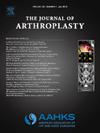Utilization of Machine Learning Models to More Accurately Predict Case Duration in Primary Total Joint Arthroplasty
IF 3.4
2区 医学
Q1 ORTHOPEDICS
引用次数: 0
Abstract
Background
Accurate operative scheduling is essential for the appropriation of operating room esources. We sought to implement a machine learning model to predict primary total hip arthroplasty (THA) and total knee arthroplasty (TKA) case time.
Methods
A total of 10,590 THAs and 12,179 TKAs between July 2017 and December 2022 were retrospectively identified. Cases were chronologically divided into training, validation, and test sets. The test set cohort included 1,588 TKAs and 1,204 THAs. There were four ML algorithms developed: linear ridge regression (LR), random forest, XGBoost, and explainable boosting machine. Each model’s case time estimate was compared to the scheduled estimate measured in 15-minute “wait” time blocks (“underbooking”) and “excess” time blocks (“overbooking”). Surgical case time was recorded, and SHAP values were assigned to patient characteristics, surgical information, and the patient’s medical condition to understand feature importance.
Results
The most predictive model input was “median previous 30 procedure case times.” The XGBoost model outperformed the other models in predicting both TKA and THA case times. The model reduced TKA ‘excess time blocks’ by 85 blocks (P < 0.001) and ‘wait time blocks’ by 96 blocks (P < 0.001). The model did not significantly reduce ‘excess time blocks’ in THA (P = 0.89) but did significantly reduce ‘wait time blocks’ by 134 blocks (P < 0.001). In total, the model improved TKA operative booking by 181 blocks (2,715 minutes) and THA operative booking by 138 blocks (2,070 minutes).
Conclusions
Machine learning outperformed a traditional method of scheduling total joint arthroplasty cases. The median time of the prior 30 surgical cases was the most influential on scheduling case time accuracy. As ML models improve, surgeons should consider ML utilization in case scheduling; however, prior 30 surgical cases may serve as an adequate alternative.
利用机器学习模型更准确地预测初级全关节成形术的病例持续时间。
导言:准确的手术时间安排对于手术室(OR)资源的分配至关重要。我们试图通过机器学习(ML)模型来预测初级全髋关节(THA)和全膝关节置换术(TKA)的病例时间:我们回顾性地识别了 2017 年 7 月至 2022 年 12 月期间的 10,590 例全髋关节置换术和 12,179 例全膝关节置换术病例。病例按时间顺序分为训练集、验证集和测试集。测试集队列包括 1,588 例 TKAs 和 1,204 例 THAs。开发了四种机器学习算法:线性脊回归(LR)、随机森林(RF)、XGBoost(XGB)和可解释提升机(EBM)。每个模型的病例时间估计值都与以 15 分钟 "等待 "时间块("预约不足")和 "超额 "时间块("预约过多")为单位的预定估计值进行了比较。手术病例时间被记录下来,SHAP(Shapley Additive exPlanations)值被分配给患者特征、手术信息和患者病情,以了解特征的重要性:最具预测性的模型输入是 "前 30 个手术病例时间的中位数"。在预测 TKA 和 THA 病例时间方面,XGBoost 模型优于其他模型。该模型将 TKA "多余时间块 "减少了 85 个块(P < 0.001),将 "等待时间块 "减少了 96 个块(P < 0.001)。该模型并未显著减少THA的 "超时时间块"(P = 0.89),但显著减少了134个 "等待时间块"(P < 0.001)。总的来说,该模型将TKA手术预约时间缩短了181个区块(2715分钟),将THA手术预约时间缩短了138个区块(2070分钟):机器学习的效果优于传统的全关节成形术(TJA)病例排期方法。前 30 个手术病例的中位时间对安排病例时间的准确性影响最大。随着 ML 模型的改进,外科医生应考虑在病例排期中使用机器学习;不过,前 30 例手术病例可作为适当的替代方法。
本文章由计算机程序翻译,如有差异,请以英文原文为准。
求助全文
约1分钟内获得全文
求助全文
来源期刊

Journal of Arthroplasty
医学-整形外科
CiteScore
7.00
自引率
20.00%
发文量
734
审稿时长
48 days
期刊介绍:
The Journal of Arthroplasty brings together the clinical and scientific foundations for joint replacement. This peer-reviewed journal publishes original research and manuscripts of the highest quality from all areas relating to joint replacement or the treatment of its complications, including those dealing with clinical series and experience, prosthetic design, biomechanics, biomaterials, metallurgy, biologic response to arthroplasty materials in vivo and in vitro.
 求助内容:
求助内容: 应助结果提醒方式:
应助结果提醒方式:


